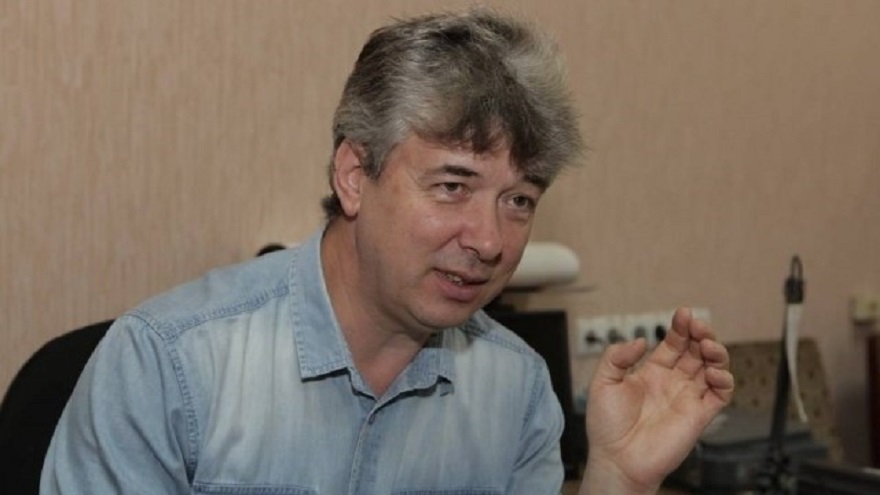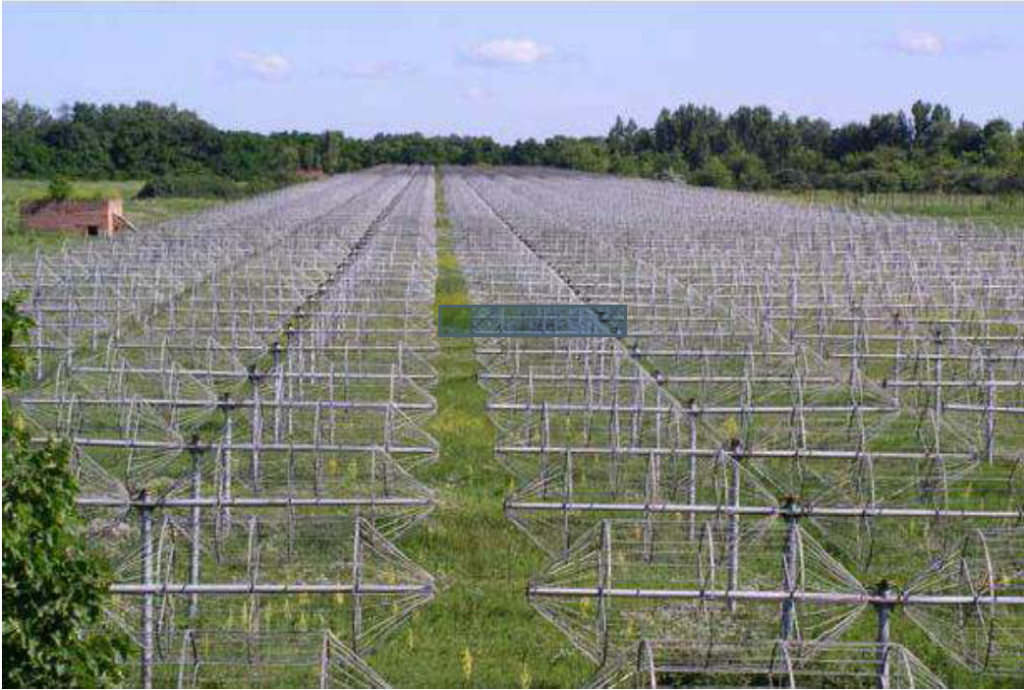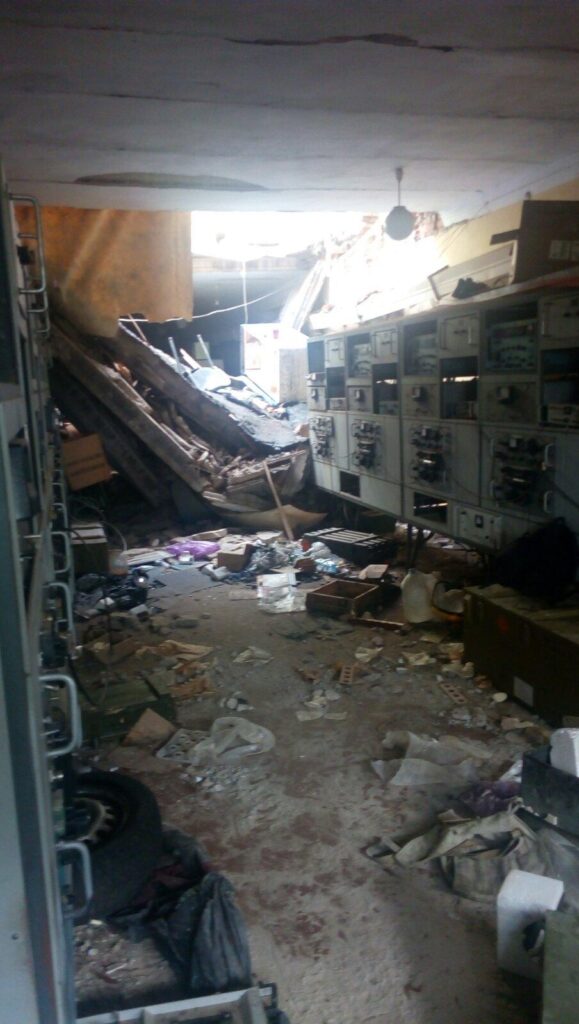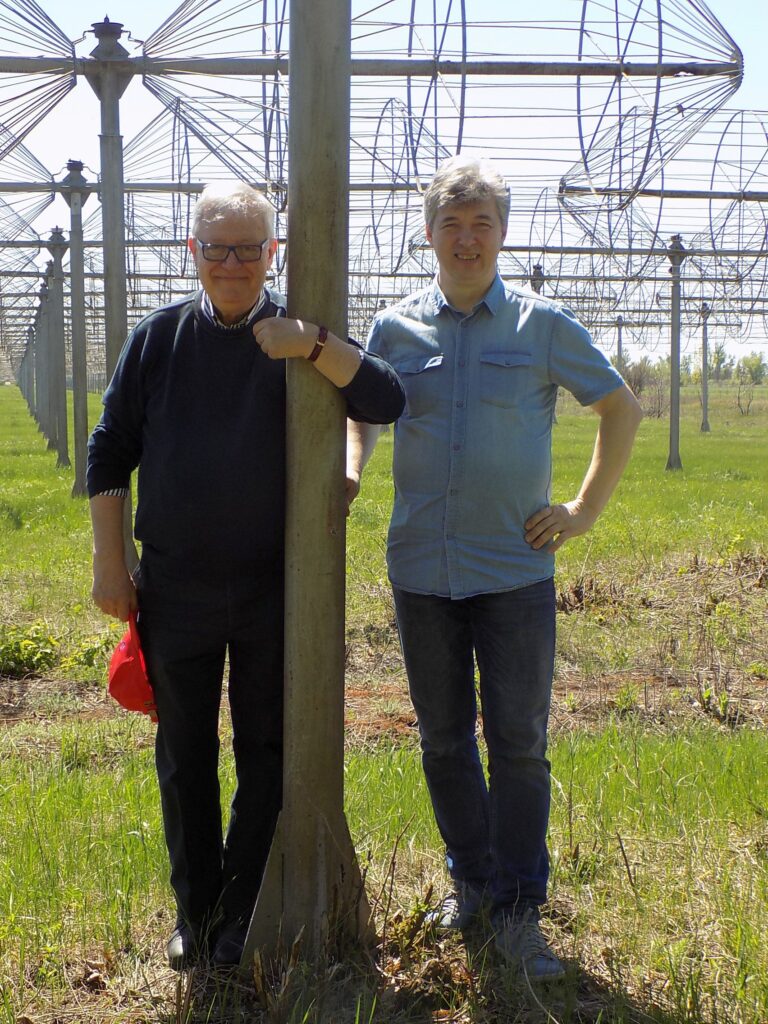- Vyacheslav Zakharenko, the Director of the Radio Astronomy Institute (RAI) of the National Academy of Sciences of Ukraine, tells us about savages’ attack on the world’s largest radio telescope near Kharkiv and about the RAI’s cooperation with the international scientific community
The world’s largest decameter radio telescope UTR-2 is located in the Kharkiv region. For many years, it has been an important part of the JUNO spacecraft’s exploration of Jupiter. In addition, it was used to observe the space weather determined by the Sun.
However, in March 2022, the radio telescope got occupied by barbarians. For six months, it was ruled by people for whom Jupiter was just a motorcycle to be stolen (Russians really had such a brand of motorcycles in the Soviet era). And when the territory was liberated by Ukrainian Army in September, everyone realized that world science had lost a lot during this time.
We talked to Vyacheslav Zakharenko, the Director of the Radio Astronomy Institute of the National Academy of Sciences of Ukraine, about the current state of the unique scientific equipment, the current work of the institution, and the plans for the future.

Viacheslav, what is the current state of the radio astronomy observatory housing the UTR-2 telescope?
The territory of theObservatory, where the UTR-2 (still the largest in the world) and the first sections of the new GURT radio telescope are located, is almost 140 hectares, and all of them have traces of the barbarian invasion and occupation. There are 17 buildings and constructions on the territory, one of which is three technical tunnels under the antenna field, each 900 meters long.
Currently, all of them are damaged to some extent as a result of the barbarians’ activity there. 5-6 buildings are lightly damaged, the rest are seriously damaged, and one of the warehouses is destroyed completely. The most regrettable thing for us is that the principal building of UTR-2 telescope is heavily damaged. It was hit by a rocket or a mine. The roof is destroyed. Reinforced concrete floor slabs between the first and second floors have collapsed over an area of several meters and there is a threat of further destruction. The building quite may be impossible to restore.
There is no electricity supply to the facilities. It is not possible to restore it yet because of the mined area. We are waiting for the sappers to solve this problem, and only then the electricians will be able to do their job.

And what about the telescope itself? What about the antenna field and the cables in the tunnels under it?
The antenna field itself is fine. As for the condition of the cables that transmit the signal from it to the data processing centers, they seem to be intact, but we cannot be sure of this, because the demining of the tunnels in which they are located is not yet complete. The savages also set up a shooting range in the northern tunnel and fired weapons there.
So it is difficult to say whether the communication equipment is intact. But we know that everything is relatively good with the GURT radio telescope. It also consists of several antennas scattered around the territory, and we have made sure that they are fine, and that the phasing equipment, amplifiers and cables leading to them are not damaged.
What about signal processing equipment? Computers? Servers?
One computer, on the basis of which the modern digital receiver of the GURT broadband radio telescope is made, miraculously remained intact. But the rest of the equipment (more than a dozen modern computers and digital receivers), including servers, was either looted or simply destroyed by the savages. For some reason, they liked the system units of some computers. They stole them and simply threw away the motherboards.

We managed to save the time reference system. We need it for accurate timekeeping during observations. We repaired all the equipment that survived and transported it to Poltava Oblast to the second largest Ukrainian radio telescope, URAN-2.
Are you currently working on the conservation of buildings and equipment?
The conservation of the buildings has been completed. The surviving equipment was taken to a safe place where it continues to operate. We are currently planning to restore what was destroyed.
What about the scientific projects that were using the telescope? Are they now suspended or ongoing?
Those scientific programs in which we participated before the large-scale invasion and in which there is no need to use the narrowly focused beam of the UTR-2 continue. First of all, these are studies of solar system objects and powerful radio sources in the Galaxy: supernova remnants, pulsars, etc. We also study the influence of the interstellar and interplanetary environment on the radiation of space objects. The work of UTR-2 was taken over by URAN-2, which is a similar field of phased array antennas (but about 4 times smaller) near the village of Stepanivka in Poltava region.
For example, we participate in international studies of Jupiter with the JUNO spacecraft. Every time it approaches the giant planet, we, along with dozens of other telescopes, closely monitor what is happening to its radio emissions.
URAN-2 also participates in international projects to study solar radiation. Its observations are part of some research carried out by the Solar Orbiter and Parker Solar Probe spacecraft.
But our work on mapping celestial radio sources had to be stopped. We are talking about surveying the entire sky to update the catalog at the frequencies at which UTR-2 operates and search for new radio sources. To do this, we used five UTR-2 beams to observe “strips” of the sky (different ones every day). It takes 40 to 100 days to record a whole “frame”.
In recent years, we managed to take several “frames” of each sky area with different time and frequency resolution parameters. Now we need to process this information. We have already collected enough material for at least 5 years’ work.
You mentioned the work to restore the observatory. Is it only about restoring what was there, or do you plan to modernize it?
Yes, we will not only restore what was there, but also hope to modernize the radio telescope. In particular, the system of phasing and summing signals from the antennas has been analog until now. Now we want to make it mixed: analog in small sections of the antenna field, and digital between these sections (sub-sections). Our GURT radio telescope and the French NenuFAR telescope co-created by us, operate on this same principle. Most likely, for digital phasing, we will use a standard solution, which is now used on European low-frequency radio telescopes similar to UTR-2 and GURT — LOFAR and NenuFAR.

And what about your employees? How many people went abroad and how many stay in Ukraine?
We have almost 250 employees in total. More than 100 of them stayed in Kharkiv, 100 moved to safer regions of Ukraine, and just under 40 are now working abroad. At the same time, the latter are actively involved in both international cooperation and the life of our institute. So our productivity has been even enhanced in some ways.
